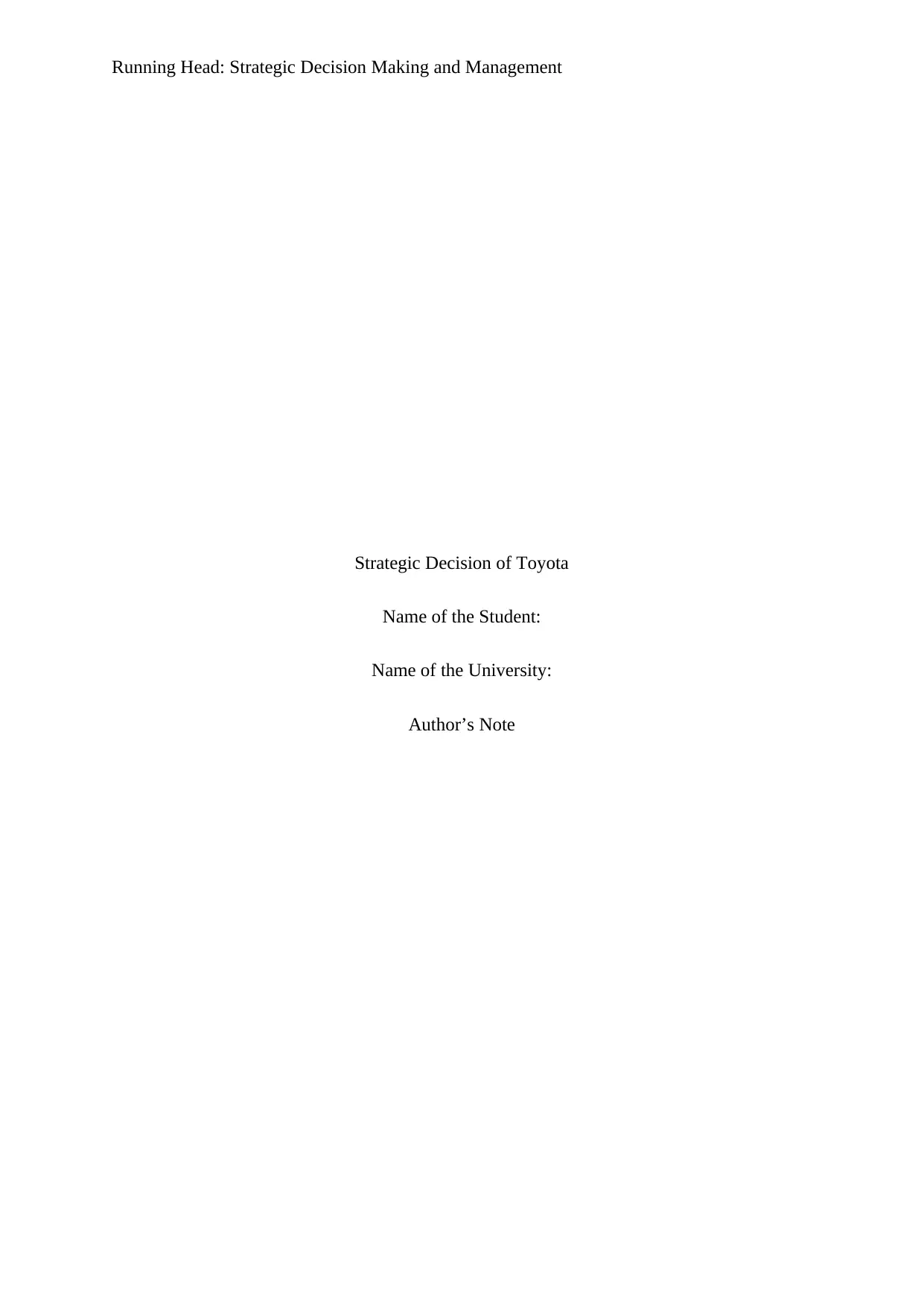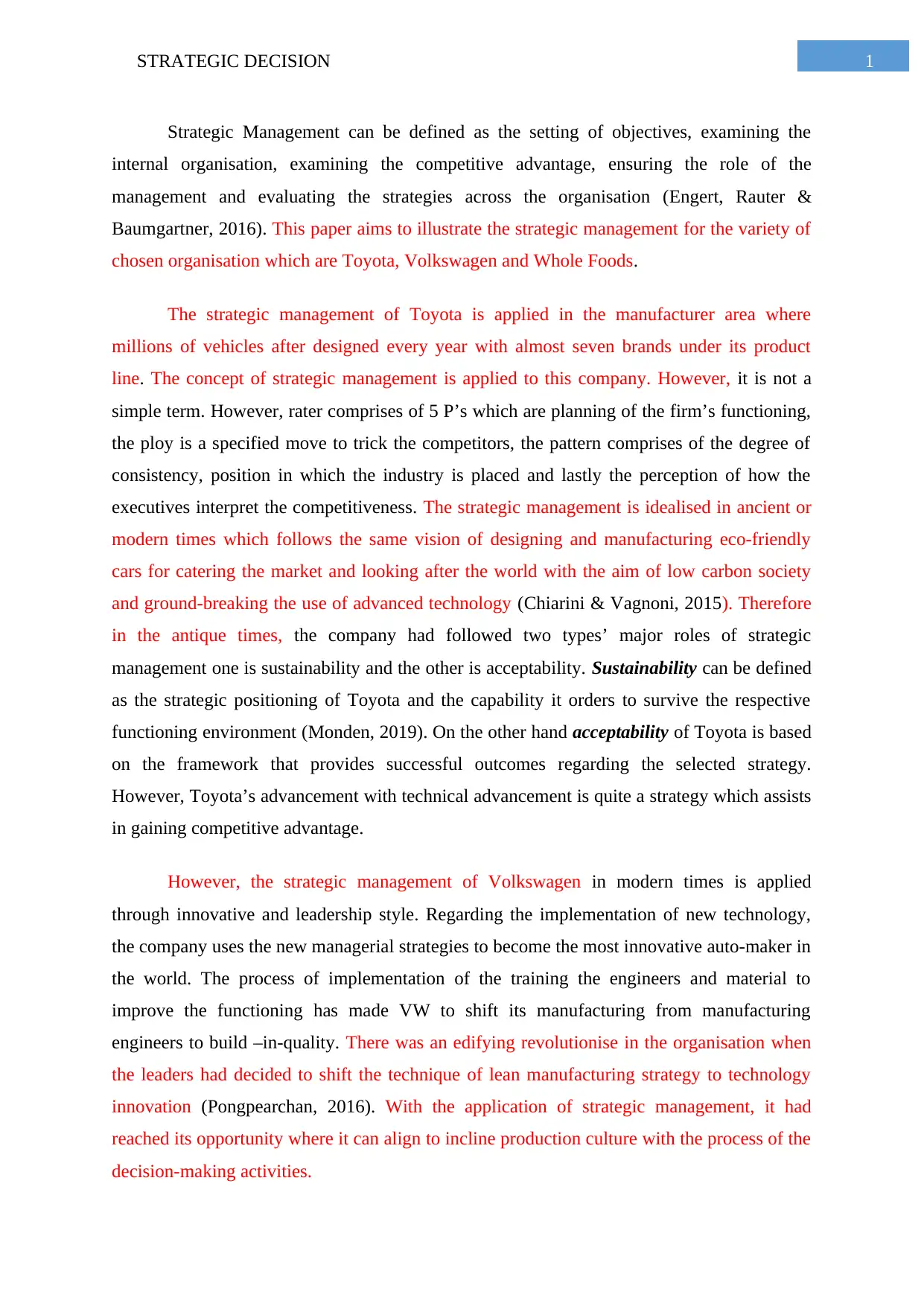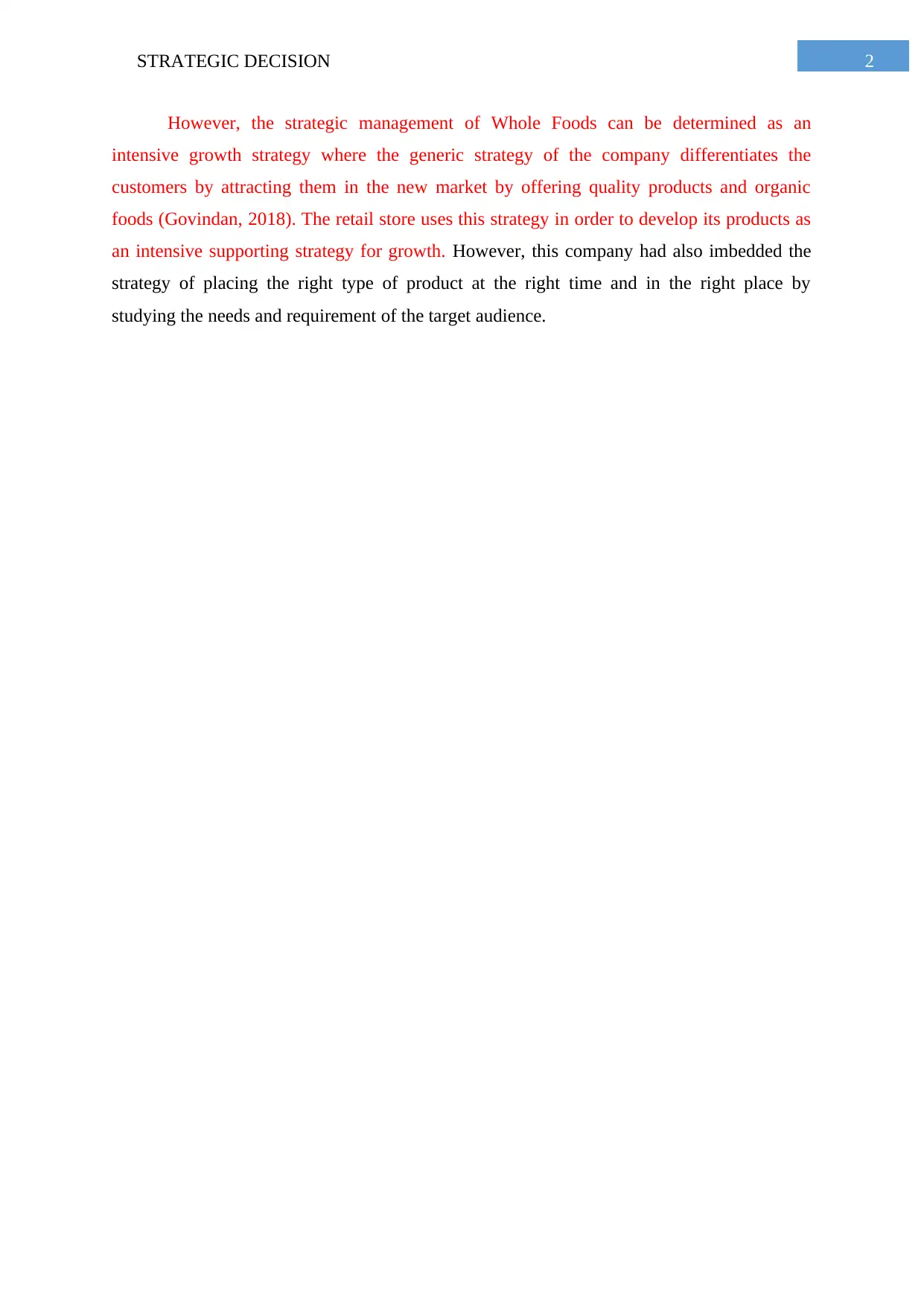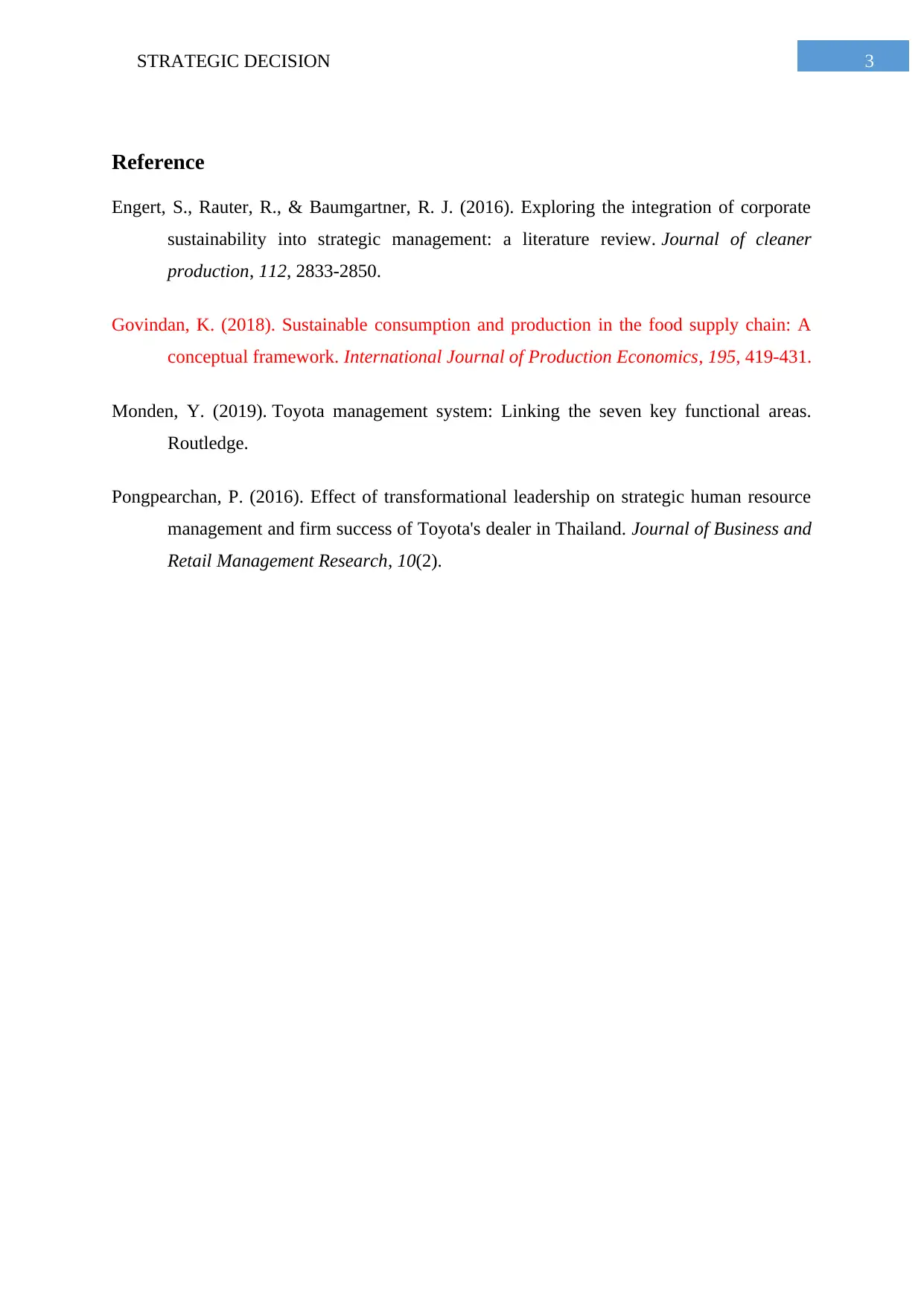Strategic Management Evaluation of Toyota, Volkswagen, Whole Foods
VerifiedAdded on 2022/09/22
|4
|713
|24
Report
AI Summary
This report provides an analysis of the strategic management approaches of Toyota, Volkswagen, and Whole Foods. It begins by defining strategic management and outlining its core components, such as planning, competitive advantage, and market positioning. The report then delves into Toyota's strategic decisions, focusing on its eco-friendly car manufacturing, sustainability, and technical advancements. It also examines Volkswagen's modern strategic management, highlighting its innovative leadership and adoption of new technologies, including lean manufacturing. Finally, the report explores Whole Foods' intensive growth strategy, which emphasizes differentiating itself through quality products and organic foods, as well as its focus on understanding and meeting customer needs. The report draws on academic sources to support its analysis.
1 out of 4











![[object Object]](/_next/static/media/star-bottom.7253800d.svg)